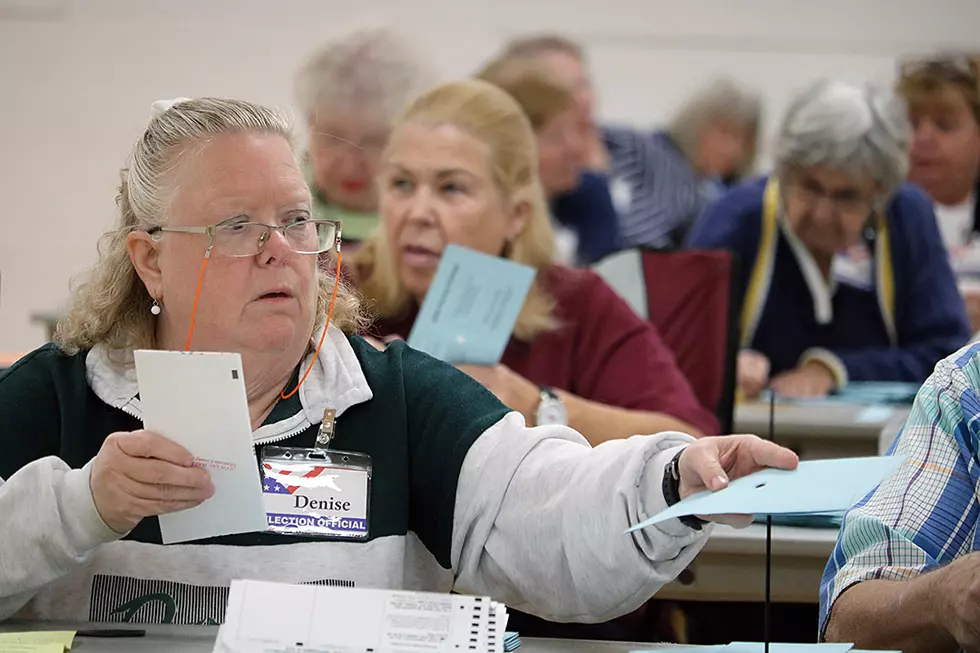
Missoula County weighs shift from precinct ballot tabulation to central count
Back in 2005, the number of Missoula County voters who voted absentee was just 15% while the rest, 85%, opted for the polling place. Now, those numbers have reversed as voting by mail grows in popularity and increases participation.
During that time, the technology used to tabulate ballots also has changed, leaving Missoula County with a decision to make. Should it continue to bear the cost of tabulating ballots at the precinct level, or shift to a centralized count?
The former would require a significant upgrade in technology while the latter would require a change in both attitudes and practice.
“We are already preparing for our 2022 elections,” said Bradley Seaman, the county's election administrator. “I need to train our judges on what they're going to do, and I need to know how we're going to operate in 2022. Will we be a central-count county or a precinct-level count county.”
Seaman tossed that question to Missoula County commissioners this week as a public hearing opened on the future of county elections. The county is the largest in the state that still tabulates ballots at the precinct level.
But recently, Seaman said, the elections office had to upgrade its reporting system. It also purchased new devices in 2020 that run on a different operating system than the precinct-level tabulators. As a result, the county must decide whether to purchase new precinct-level tabulators or shift to a central count, eliminating the tabulators all together and the costs that come with them.
“We're the largest county in Montana that still uses precinct-level tabulators,” Seaman said. “When they were purchased in 2005, the majority of voters voted at the polling place, and absentee numbers were in the teens. We've flipped that around. We now have 85% of our voters voting absentee with only 15% of our active voters who still vote at the polling place.”
According to Seaman, upgrading to new precinct-level tabulators would cost around $164,000 to purchase and set up. The machines also come with annual maintenance costs and licensing. He placed that cost at around $6,826 annually for 30 machines.
Broken down by current polling-place turnout, the cost per vote in the first year of use would be $11.33 while the cost per vote over the following nine years would be around $15.57. The cost for a mail-in ballot in 2020 was less than $4, according to the county.
Despite the potential savings, Montana counties don't have the authority to shift to an all-mail election under state law, which prohibits all-mail ballots in federal primary and general elections. While former Gov. Steve Bullock used his emergency authority to override that law in 2020, the Legislature in 2021 revoked a governor's authority to do that in the future.
“We will always have polling place elections until the state law changes for the federal primary and general elections,” Seaman said.
As proposed, however, the county would maintain its polling places as an option for voters. But instead of tabulators at each location, the county would shift to a drop box. Those ballots would be sealed and transported to a central count at the Elections Center.
“There are substantial cost savings by removing our polling place tabulators,” Seaman said. “Instead of putting it in a machine that tabulates it there at the polling place, it's put into a drop box and transported here. If we established our ballot drop boxes, we could focus on other steps instead of equipment set up and training.”
Other large counties have already shifted to a central count, leaving Missoula as an outlier. Commissioners will keep their public hearing open for a week and reach a decision later this month on whether to shift to a central count or bear the cost of maintaining the status quo.
“We've seen over the last 10 to 20 years a big flip in the number of people who go to their precinct and vote in person and those who vote absentee,” said commissioner Josh Slotnick. “What once was the majority voting in person at their precinct and the minority voting absentee has since swapped. We're still using technology and a system that's defined for a behavioral split we no longer enjoy.”
